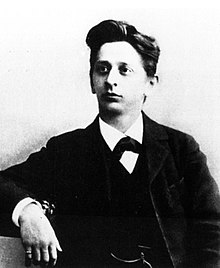Alexander Von Zemlinsky
(1871- 1942, 71세) was an Austrian composer, conductor, and teacher.
* Symphony No. 1 (1892/21세)
Conducted by Antony Beaumont with the North German Radio Symphony Orchestra.
I. Allegro Ma Non Troppo - 00:00
II. Scherzo - Allegro Scherzando - 11:13
III. Sehr Innig Und Breit - 16:37
IV. Finale - Moderato - 24:34
==================================================================================
* Symphony No. 2 (1896/ 25세)
Conducted by Edgar Seipenbusch with the Slovak Philharmonic Orchestra.
I. Sostenuto - 00:00
II. Scherzo - 14:22
III. Adagio - 23:27
IV. Moderato - 31:56
In 1897, the year in which his opera Sarema was first performed, Zemlinsky completed his Second Symphony, a work that was to attract a favourable reaction from the public. The symphony opens with a movement that has its own forth right grandeur, with a suggestion of Wagner. There follows a dramatic scherzo and a romantically contrasted trio. The slow movement, marked Adagio, has about it something of the poignancy of Mahler, happily resolved in conclusion. It is followed by a final movement that interrupts this mood of serenity with something more ominous, before the final resolution of conflict.
In 1896 Bruckner had died, and the death of Brahms came in the following year. Among the younger generation of composers, Richard Strauss, who was to outlive them all, had completed his series of symphonic poems, while Hugo Wolf, near to his final madness, had quarrelled with Mahler over the merits of Rubinstein's opera The Demon, and unilaterally declared himself director of the Vienna Opera. This was the Vienna
of which Zemlinsky was a part, and in which the Symphony in B flat major was written.
=======================================================================================

The Austrian composer and conductor Alexander von Zemlinsky was born in Vienna in 1871. His reputation has to some extent been overshadowed by the controversial and influential achievements of his brother-in-law Arnold Schoenberg, with Alban Berg and Anton Webern, on the one hand, and by those of his older contemporary Gustav Mahler. Zemlinsky continues the tradition of Viennese classicism, the influence of Wagner never leading him to abandon tonality. In some measure he represents a generation of Viennese composers who were able to combine the apparently divergent tendencies of Brahms and Wagner.
With the Symphony in D minor Zemlinsky completed his studies at the Vienna Conservatory. He himself conducted the first movement at an end-of-term concert in July 1892 (attended by Brahms), and on 10 February 1893 his teacher Johann Nepomuk Fuchs led the Conservatory orchestra in the first performance of the whole work. 'Zemlinsky has already learnt a thing or two', wrote Hanslick in the Neue freie Presse. 'That used to be a foregone conclusion', he growled. 'Nowadays, I regret to say, it already counts as praise.'
At the Vienna Conservatory Zemlinsky had learnt the Brahmsian technique of developing variation (as later propagated by Schoenberg) which, if applied with skill and imagination, enables a composer to generate a large-scale form from a handful of seemingly trivial ideas. In this spirit everything in the symphony originates directly or indirectly from its first five notes. Zemlinsky's variative processes are neither pedantic nor demonstrative, and ideally the listener will scarcely notice them. But when it comes to writing a symphony, developing variation and sonata form make uneasy companions, because an exposition rich in short-term variation inevitably limits the scope for longer-term thematic development. Since Zemlinsky had not yet mastered the cut and thrust of Brahmsian logic, the development section of his first movement, colourfully scored and carefully timed as it may be, takes refuge in histrionics. The subtle humour of the Scherzo and the Schubertian lyricism of the Trio find him on more congenial terrain. And even if he never quite manages to realise the full potential of his ideas, the adagio reveals a deeply felt, Brucknerian solemnity. The tuneful Finale is arguably better suited to a serenade than a symphony; but Zemlinsky again proves himself a master of colour, and in the jubilant coda he makes amends for former restraint by unleashing the full power of his brass section.
'♣ 음악 감상실 ♣ > [交響曲(Symphony)] ' 카테고리의 다른 글
| August Klughardt - Symphony No. 3,4,5번 (0) | 2014.10.02 |
|---|---|
| Paul Büttner -교향곡 1,2,3번 (0) | 2014.10.01 |
| Sir Arthur Sullivan - Symphony in E Major "Irish" (1866) (0) | 2014.09.29 |
| Franz Lachner - Symphony 모음 [1,5,8번] (0) | 2014.09.28 |
| Georges Bizet -Symphony No 1 C major / No 2 Roma (0) | 2014.09.27 |
